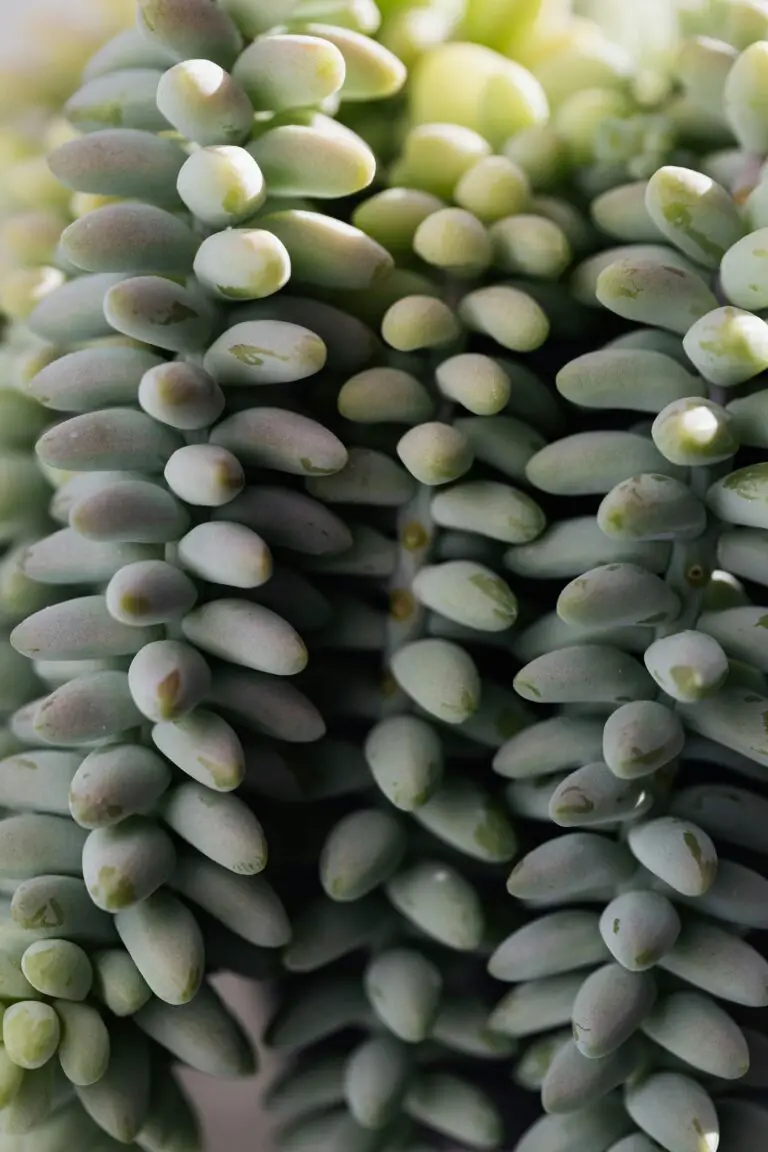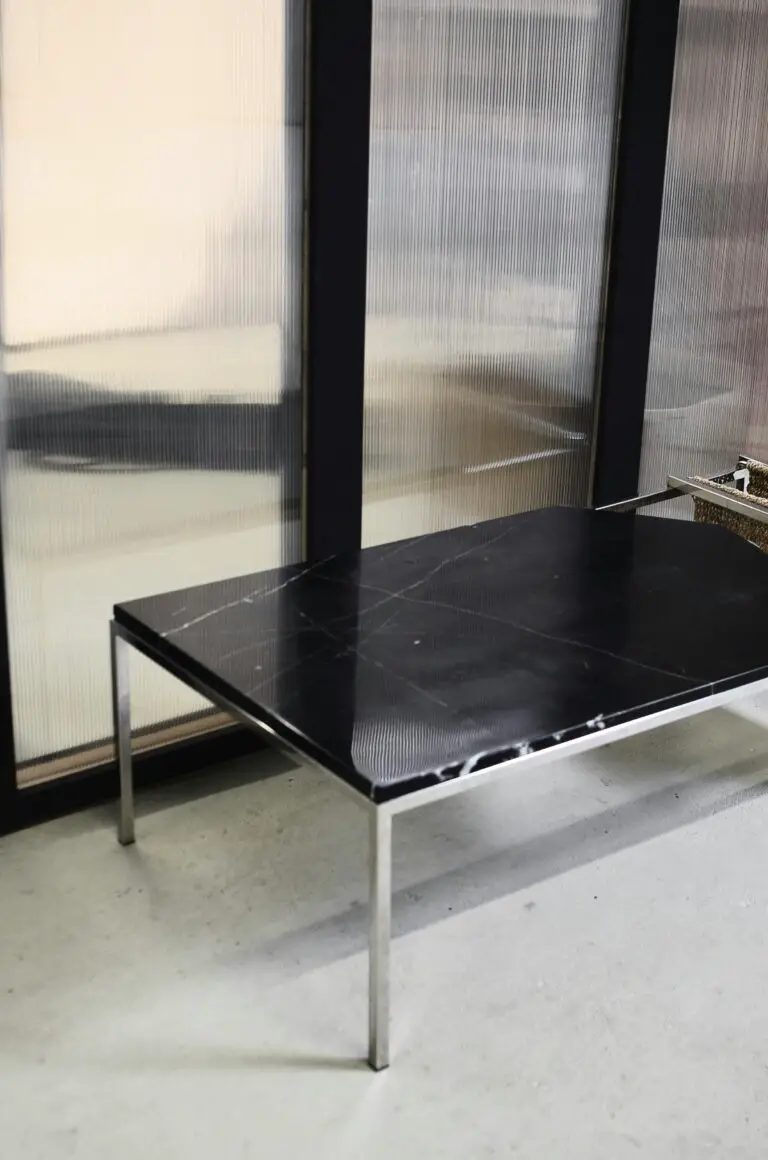Introduction to Sedum Plants
Sedum plants are the unsung heroes of the horticultural world, boasting an impressive repertoire of shapes, colors, and resilience. From the rolling hills of outdoor gardens to the cozy confines of indoor pots, their versatility knows no bounds. You can spot sedums strutting their succulent leaves in so many varieties that it’s like a parade of Mother Nature’s own design. They have carved out a niche in the hearts of gardeners and landscape artists alike, popping up as popular mainstays in green spaces around the globe.
Let’s take a virtual stroll through the world of sedums. Picture this: a garden where bursts of star-shaped blooms mingle with fleshy leaves, each bearing a unique character—from powdery blues and greens to fiery reds and oranges. Sedums are the chameleons of the plant world, changing their attire with the seasons, and basking in the glow of their low-maintenance nature. This very adaptability makes them the darlings of drought-tolerant landscapes, where they perform with admirable gusto despite scant watering.
But what truly makes sedums an integral part of our gardens? Perhaps it’s their hardiness, shrugging off cold winters with the same ease as a polar bear in the Arctic. Or maybe it’s their year-round visual appeal, standing tall when other plants have retreated into their winter slumber. In the paragraphs to come, we’ll dig deeper into the ecological dynamics that govern these plucky plants, specifically answering the inquisitive gardener’s query: what eats sedum?

Feeling inspired to learn more about taking care of these tenacious little troopers? Then you won’t want to miss our extensive guide on cultivating success in your garden. It’s your one-way ticket to getting the most out of these stunning and steadfast succulents!
Common Characteristics of Sedum Pests
When it comes to the serene world of succulents, sedums stand out with their lush, fleshy leaves, a true feast for the eyes. Yet, lurking in the shadows are voracious critters, eager to nibble away at their succulence. But what makes these pests such formidable foes to our beloved sedums? Let’s peel back the layers and explore the common traits of these greenery-gobbling villains.
First off, sedum pests are masters of disguise. Many boast a green or brown coloration that camouflages them amongst the leaves and stems, allowing them to chomp away unnoticed. Whether it’s the stealthy snails, gliding in the dead of night to leave a telltale trail of destruction, or aphids that cluster in plain sight yet seem invisible against the green backdrop, their deceptive hues are their first line of defense.
Adaptability is another shared trait. These pesky trespassers adjust their dining habits and reproductive cycles around the succulent’s growth periods. Take the sedum mealybug, for example; it reproduces at an astonishing rate right at the peak of the growing season, ensuring that its offspring have a plentiful buffet at their disposable miniscule mandibles.
Moreover, they’ve developed ingenious ways to reach the nutritious sap that sedums so carefully conserve. With mouthparts evolved to pierce and suck, creatures like scale insects can tap directly into the plant’s life force, bypassing outer defenses with ease. It’s like having the key to the city, only in this instance, it’s more about having the straw to the juice box.
Lastly, these garden marauders often bring with them an entourage of complications. Sooty mold that thrives on the honeydew excreted by aphids can soon turn sedum leaves from vibrant green to a dismal blackened state. Ants, drawn to the sweet honeydew, further protect these honeydew-producing pests from their natural predators, creating an unholy alliance in the miniature jungle that is the succulent pot.
Understanding these characteristics is crucial in managing your succulent’s well-being and documenting the trials and triumphs of sedum care. Speaking of sedum care, did you know that proper staking can ensure your sedums stand tall and proud? Discover more about this and other succulent care tips that can change the game for your garden.

It’s a battle out there in the pots and planters, but with a little knowledge and a lot of passion, we can help our sedums thrive against the insects’ ravenous appetites. After all, knowing the enemy is the first step to victory in the verdant wars of the windowsill.
Insects That Feast on Sedum
If you’ve planted sedum in your garden, you’re not the only one who finds these succulents irresistible. Say hello to a few tiny garden visitors that treat these plants like an all-you-can-eat buffet. Aphids, those pesky green or black critters, often gather in large numbers on sedum leaves, sapping the plant’s vitality. Imagine a group of microscopic vampires, but instead of fangs, they have straw-like mouths designed to suck the life out of your beloved succulents.
Equally troublesome are the mealybugs. These soft-bodied insects look like tiny cotton balls and are experts at hiding in the nooks and crannies of your sedum, spreading rapidly and secreting a sticky substance called honeydew. This sugary excretion can lead to sooty mold growth, turning your sedum’s slick leaves into a fungal horror show.
And let’s not overlook those slimy slowpokes—snails. Though they may not have the speed, they make up for it in appetite. They’ll chew through your sedum’s leaves and flowers, often under the cover of darkness. It’s like a silent disco in your garden, with snails leaving behind a trail of destruction along with their signature slime trails.
The damage these critters inflict on sedum goes beyond cosmetic blemishes. Infestations can stress the plant, making it more susceptible to disease and less likely to flourish. Prolonged exposure to these insects can spell a slow decline for your sedum, detracting from the plant’s health and the aesthetic of your garden sanctuary. For a visual guide on handling aphids, check out this video:
Combatting these sedum saboteurs is a crucial part of succulent care. Regular monitoring, prompt removal of affected areas, and safe, targeted pest control measures can protect your sedum from unwanted guests. By keeping an eye out for these insects and taking action when necessary, you can ensure that your sedums continue to thrive, adding structure and beauty to your garden without serving as a feast for these pesky pests.
Larger Animals Drawn to Sedum
When you think of a succulent garden, images of serene, untouched plant life may fill your mind. But for larger animals, those plump leaves of sedum are more like a dinner invitation! Let’s dive into the world of backyard foragers and find out who’s setting the table with your sedum.
Ravenous Rodents: These garden gate-crashers, including squirrels and mice, are real sedum fanatics. They’re not fussy eaters and will nibble on your succulents with gusto. Imagine you spot a chunky squirrel, its cheeks bulging with sedum leaves—it’s a common sight for many gardeners. The extent of damage can vary, from minor aesthetic nibbles to more serious, plant-threatening feasting.
Deer, the Gentle Giants: Perhaps surprisingly, deer also have a taste for these succulent morsels. They can wander into a sedum-filled oasis and leave a path of destruction in their wake. Picture a deer in the twilight hours, casually decimating your sedum patch; it’s a sight that’s as enchanting as it is distressing for succulent enthusiasts.
But it’s not just about the unscheduled snacking; deer can trample plants underfoot, causing even more damage than their appetites suggest. Protecting your sedum from these larger animals can be quite the conundrum, but there are methods to dissuade these leafy lunch lovers, like using fencing or repellents. You can find tips on safeguarding your botanical buddies at this comprehensive guide on preventing deer and rodents from turning your garden into their personal buffet.
To see sedum’s resilience firsthand, and perhaps empathize with what our leafy friends endure, check out this video:
Understanding what eats sedum and the impact they have on these succulents is crucial for any gardener looking to protect their verdant treasures. Remember, a little knowledge goes a long way in keeping your sedum safe and your garden thriving!
Birds and Their Role in Sedum Cultivation
When it comes to the succulent world of sedums, these drought-resistant plants attract more than just admiring glances. Have you ever paused to wonder about the feathered friends that frequent your sedum patch? Indeed, birds play a fascinating duel role when it comes to these hearty succulents.
Let’s take a refreshing dive into the avian world. Picture this: a sparrow delicately hopping along the plump leaves of your ‘Autumn Joy’ sedum. It’s not just about the aesthetics; these birds are on a mission. Yes, sedum plants can fall prey to a variety of insects, including aphids and mealybugs. However, birds, those natural pest controllers, swoop in to keep the insect populations in check. A single chickadee can gobble up thousands of pests in one season, making them a sedum’s best ally in the game of survival.
But the story isn’t all rosy. Sometimes, birds themselves can turn into pesky visitors, nipping at tender sedum shoots and leaves, especially during the early spring when food is scarce. This can lead to damaged plants that never quite reach their full glory. It’s a delicate balance that Mother Nature maintains, with gardeners observing from the sidelines, often in awe of the interconnectedness of it all.
Real-life examples bring this tale to life. Take the charming sight of finches twirling atop taller sedum varieties, feeding on the seeds during the late summer days. At the same time, robins might be scouring the base of your sedums for earthworms brought closer to the surface by the shallow root systems of these succulents. Every flutter and peck is part of a complex dance that keeps your garden thriving.
Is it not thrilling to watch? To see this dynamic in action, let’s pause for an engaging visual experience:
As you continue your gardening journey, keep an eye on the sky and the plants. Birds do more than just grace our gardens with their songs and vibrant splashes of color; they play a vital role in the cultivation and maintenance of your resilient sedums. So next time you see a bird flitting through your garden, ask yourself, “Friend or forager?” Either way, they’re a key part of what eats sedum – sometimes as guardians, other times as grazers.
Indicators of Sedum Predation
Are your sedums looking less than stellar? It might be time to play detective in your garden. Identifying predators of these succulents can often be as simple as knowing what signs to look for. Here’s a tip: start your investigation at dawn, when the damage is fresh and the culprits might just be scurrying back to their hideouts!
One clear sign of sedum consumption is visible bite marks. Unlike a clean cut from pruning shears, pest bites are often jagged, leaving a ragged edge on the leaves or stem. If your sedum has gone from plump to patchy overnight, slugs or snails could be dining out on your greenery. As for those tiny, circular holes dotting your sedum leaves like Swiss cheese? Hail aphids, the nibblers behind this pattern.
But wait, there’s more! Don’t overlook the foliage discoloration. If you spot yellowing or browning leaves that crumble at a touch, suspect a sap-sucker’s presence. Aphids and mealybugs, notorious for such misdemeanors, can turn your sedum’s sap into their sweet feast, turning healthy green into sickly yellow. To catch these tiny culprits in the act, check under the leaves and within the crowns; these pests love to hide where they dine.

We can’t talk about sedum predators without mentioning the web of crime—literally! Spiders might spin their webs for a living, but when you see fine, silky threads wrapped around your sedum, think spider mites. These guys host a microscopic garden party on your plants, and their webbing is the VIP pass. Spot the webs, and you’ll know it’s time to gently hose down your plants or introduce some mighty mite predators to break up the party.
For hands-on advice on combatting garden pests, consider visiting this resourceful guide. It’s packed with insights on how to identify garden pests and manage them without turning your oasis into a chemical warzone. Remember, every garden is an ecosystem, and learning to read the signs of trouble is crucial to keeping your sedum—and all its cohabitants—thriving!
Keep a vigil, garden guardian! Your sedum’s beauty is worth protecting, and knowing these indicators of predation is the first step in safeguarding its splendor.
Preventative Measures and Solutions
For lovers of sedum, these succulent beauties are more than just another plant—they’re a vibrant addition to any garden landscape. But what lurks beneath the foliage waiting to indulge in sedum’s lush leaves? A whole host of critters, from the tiniest of insects to the nimblest of birds. Now, it’s not all doom and gloom; there’s a silver lining. With the right know-how, you can shield your sedum from these hungry predators.
Natural Protections: Work with Mother Nature
Let’s start with the natural approach because, let’s face it, too many chemicals can spoil the broth—or in this case, the plant. Installing a net over your sedum can discourage birds from turning your garden into their personal buffet. Talk about an easy fix! And let’s not forget our busy little friends, the beneficial insects. Ladybugs and lacewings? They aren’t just cute; they’re predators to those pesky aphids and mites that view your sedum as a three-course meal.
Chemical Protections: A Little Goes a Long Way
Chemicals can be effective, but it’s all about using them judiciously. Ever heard of neem oil? It’s like kryptonite for insects but safe for the plant and other wildlife when used correctly. A targeted approach means you’ll avoid harming the good guys. Even better, insects are less likely to build up resistance, keeping your sedum safe for the seasons to come.
Remember, balancing natural and chemical protections can create a symbiotic shield around your plants, keeping the sedum safe and sound. Here’s a tip from the pros—alternate between treatments to keep those critters always guessing.
And let’s talk about a real-life example. Sally, a seasoned gardener, found her sedum decimated by slugs. She tried coffee grounds, eggshells, and even copper tape, but to no avail. Then, she discovered diatomaceous earth—a natural, abrasive powder. She created a barrier around her sedums, and voilà, no more slug problem. Sally had become a slug-fighting superhero with her natural solution. Who knew that something from the bottom of the ocean could save her garden?
So whether you’re encouraging predator insects or applying that judicious spritz of neem oil, you’re not just gardening; you’re becoming a plant protector. Embracing preventative strategies and solutions means you can enjoy your sedum without fear of the critter crunch. Now go forth and protect with confidence!
Frequently Asked Questions
If you’re curious about the diet of the critters that nibble on your beloved sedum plants, pull up a chair! We’ve got some juicy tidbits that’ll shed light on this crunchy topic. Get ready for a crash course in Sedum Snacking 101!
Who’s Been Munching on My Sedum?
It’s not just you wondering, “What eats sedum?” It’s a garden mystery as old as thyme! But fear not, the usual culprits are slugs and snails, treating your succulents like an all-you-can-eat salad bar. Not to mention certain insects with a hankering for greenery, like aphids and mealybugs.
Can Wildlife Be Blamed for My Sedum’s Munch Marks?
Don’t be quick to judge your wild neighbors, but yes, rabbits and deer find sedum as tantalizing as a chocolate bar. Imagine a deer in the headlights, but it’s actually your sedum spotlighted as tonight’s dinner!
Are My Sedum Safe Outdoors?
The great outdoors is like a sedum’s version of a theme park, but with risks. You can minimize the eat-and-greet by keeping an eye out and taking action, like protective netting or organic pest repellents. Safety first for your succulent friends!
Do Birds Find Sedum Tasty?
Most birds would rather tweet away than peck at your sedum, but if they’re feeling peckish, they might just give it a try. Keep an eye out for signs of beak-sized bites
How Do I Protect My Sedum Feast?
Defending your sedum from being the main course starts with some garden smarts. Encouraging beneficial insects, setting up barriers, and using eco-friendly pest control can save the day. It’s about being proactive, not reactive!
What’s This About Sedum and Caterpillars?
Yes, you heard right. Those little wriggly guys, caterpillars, can’t resist a juicy sedum leaf. It’s a buffet they’ll crawl miles for. But don’t worry, it’s nothing personal, they’re just really into greens!
Want a closer look at these relentless little munchers? Check out this time-lapse of a caterpillar that just can’t get enough:
And there you have it! We’ve dug into the dirt and uncovered what’s been interesting the local wildlife in your succulent sedum. Stay vigilant, and may your sedum thrive without becoming someone’s snack!


